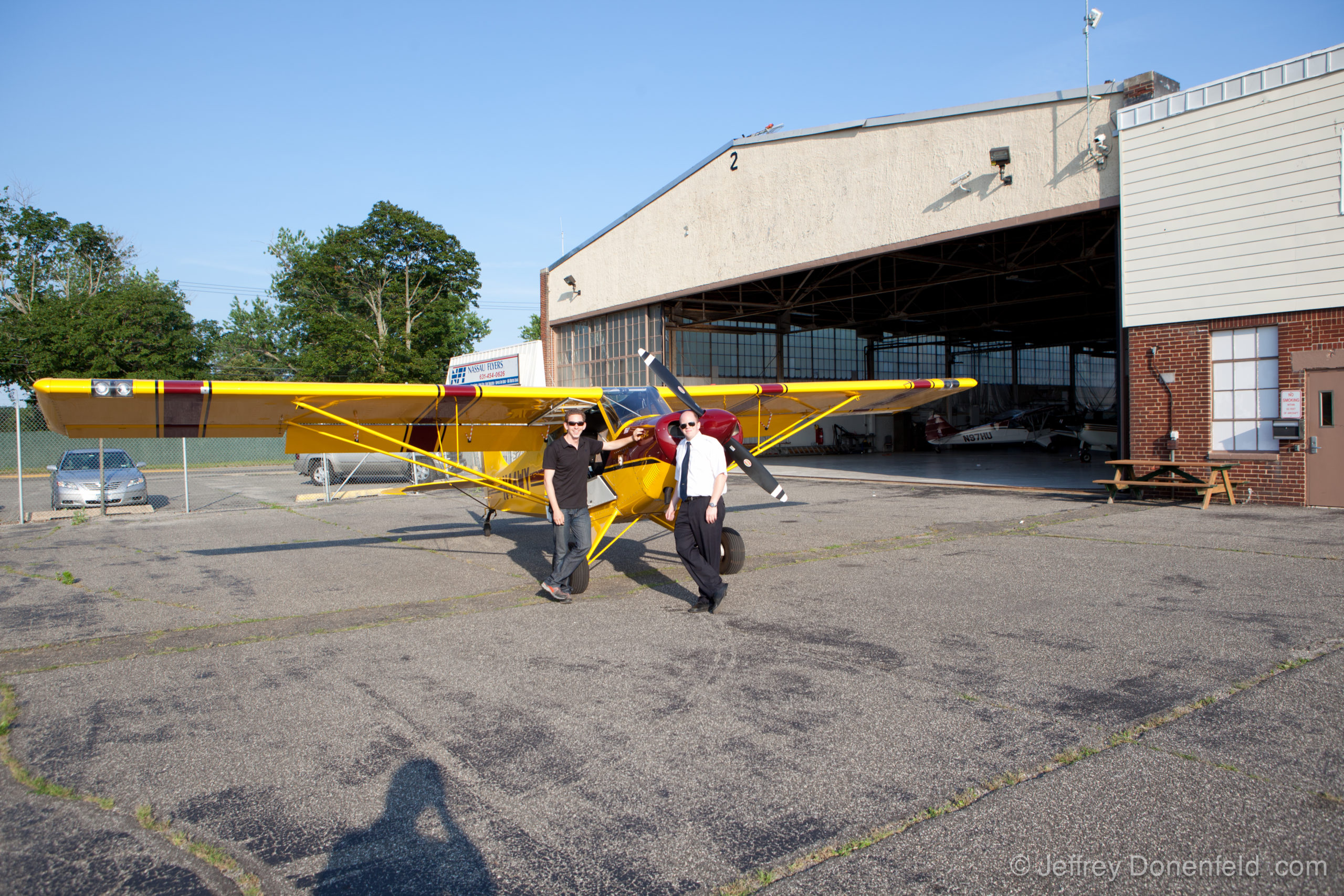Today I got the opportunity to fly the backcountry utility aircraft the Aviat Husky A-1C. This was in conjunction with a whole day of flight instruction and practice I did with Nassau Flyers out at the Farmingdale Republic Airport in Farmingdale, Long Island, New York.

After spending the earlier part of the day flying the Cessna 172, getting into the Husky was a completely different experience. The Husky is meant to be used as a short takeoff and landing, remote field plane. It’s built to be very lightweight – a metal tubular boxy covered with painted fabric. Additionally, it has a huge power to weight ratio, and can be fitted with giant “tundra tires” to facilitate landing in backcountry terrain.
From Wikipedia:
The plane features a braced high wing, tandem seating and dual controls. The structure is steel tube frames and Dacron covering over all but the rear of the fuselage, plus metal leading edges on the wings. The high wing was selected for good all-around visibility, making the Husky ideal for observation and patrol roles. Power is supplied by a relatively powerful (for the Husky’s weight) 180 hp (134 kW) Textron Lycoming O-360 flat four piston engine turning a constant speed propeller. The Husky’s high power loading and low wing loading result in good short-field performance.
Options include floats, skis and banner and glider tow hooks.The aircraft has been used for observation duties, fisheries patrol, pipeline inspection, glider towing, border patrol and other utility missions. Notable users include the US Department of the Interior and Agriculture and the Kenya Wildlife Service, which flies seven on aerial patrols of elephant herds as part of the fight against illegal ivory poaching.


Flying the Husky around Long Island with the door open at sunset was a true pleasure. The plane is very very responsive, fun to fly, and the scenery was spectacular. I’d love to fly this one again.
Related: Flying the Robinson R22 Helicopter


Comments
One response to “Flying the Aviat Husky A-1C”
[…] Post navigation ← Previous […]